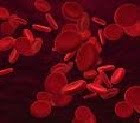
Combating Cancer Related Fatigue & Weakness
Fatigue, tiredness and weakness are common side effects, which may be associated with cancer or occur after receiving chemotherapy or radiation therapy. Anxiety, pain, stress, depression, lack of sleep, poor diet, or having low hemoglobin may contribute to fatigue. An abnormal hemoglobin is 8.0 or below. If these suggestions to minimize fatigue do not help, please contact your healthcare provider.
Minimizing Fatigue, Tiredness or Weakness
- Rest during the day and when you are feeling tired. Rest prior to an activity to ensure energy. Ask family members and friends to help with daily household chores when needed.
- Eat high protein, high carbohydrate foods such as: cereals, meats, breads, nuts, beans and seafood.
- Use vitamins and mineral supplements prescribed by your physician.
- Sexual desire may diminish during your course of treatment. Plan time for intimacy.
- Use the four “Ps” to practice energy conservation and work simplified:
Priorities – Decide what tasks or activities are most important and what is optional.
Plan accordingly and distinguish those activities that must be done by you from those that can be done by others. It is OK to ask for help when you need it.
Pacing – Pace yourself as you complete each task. Take breaks or naps as needed.
Balance activities with rest and relaxation.
Positioning – Use good body mechanics while working. Sit if you can, while doing a task. Push instead of carry. An occupational therapist can help you with additional ways to conserve energy.
Energy Conservation Principles
Work – Rest – Work – Rest
- A slow steady rate of work with short rest periods is best – never work so hard that you experience fatigue.
- Consider the best time to perform the activity – if the morning is your best time, plan a heavy activity andthen a lighter activity in the afternoon.
- Keep areas neat and tidy to eliminate heavy cleaning and time looking for lost or misplaced items.
- In order to eliminate excess bending, stooping and reaching – when storing items, store them at point of use; for example: items used on a frequent basis should not be stored in very high or very low cabinets.
Consequences of Inactivity in Cancer Patients
- Fatigue
- Physical deconditioning / weakness
- Muscle wasting
- Joint stiffness/soreness
- Blood clots
- Poor posture
- Immobility
- Pain
- Depression
- Hopelessness
Stress Management
Managing stress can play an important role in combating fatigue. The following are some suggestions:
- Adjust your expectations. For example, if you have a list of 10 things you want to accomplish today, pare it down to two and leave the rest for other days. A sense of accomplishment goes a long way to reducing stress.
- Help others understand and support you. Family and friends can be helpful if they can "put themselves in your shoes" and understand what fatigue means to you. Cancer support groups can be a source of support as well. Other people with cancer understand what you are going through.
Relaxation techniques such as audio tapes that teach deep breathing or visualization can help reduce stress.
Activities that divert your attention away from fatigue can also be helpful. For example, activities such as knitting, reading, or listening to music require little physical energy but require attention.
If your stress seems out of control, talk to a health care professional. They are there to help.


